|
|
|
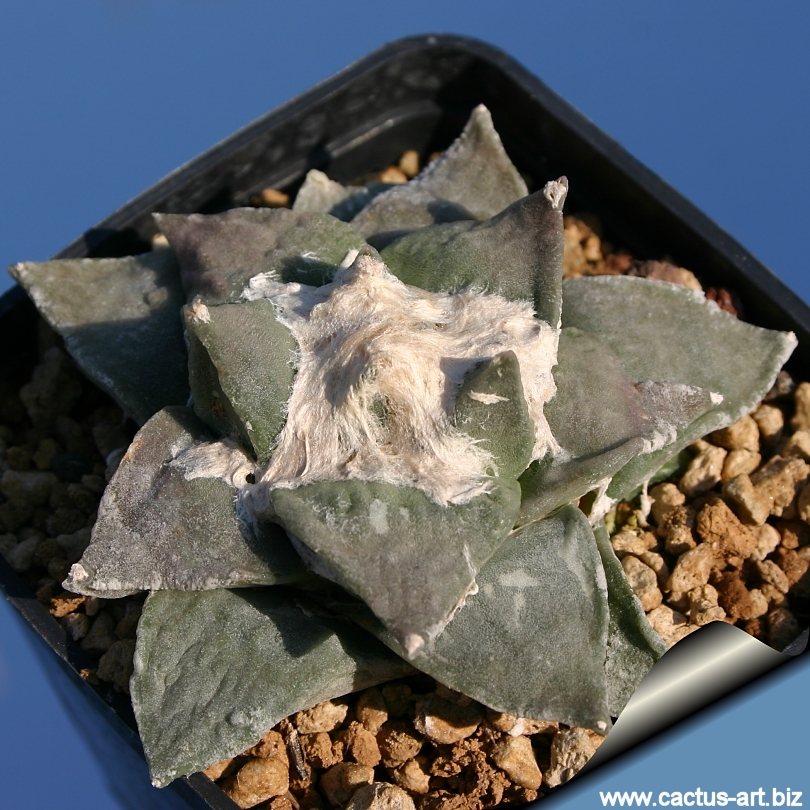
The variety "furfuraceus" is distingushable for the dark green-brown-grey
equilaterally triangular
shaped tubercles with abundant white wool at the apex.
|
|
Description: Solitary, slow-growing
geophyte cactus, with tubercles slightly projecting above ground
level. The large tuberous body is below the soil.
Stem: Grey-green, flattened, globose, rounded on top, 3-12
cm
high, 10-25cm in diameter.
Tubercles: The distinctive characteristic of A. furfuaraceus are
the tubercles, which are equilaterally triangular shaped,
divergent, convex or nearly flattened
adaxially and often with shallow adaxial undulations or wrinkling,
not fissured, 1.5-4 cm long, 1-3.5
cm wide, nearly
as wide as long;
Areoles: At the tips of the tubercles, rounded, 1-5
mm in diameter.
Flowers: Diurnal, 4-5
cm in diameter, 2-4 2cm long; white to clear pink.
Root: Tap root
Flowering time: October
Fruit: white, green, or rarely pinkish, 10-25
mm long, 3-10 mm in
diameter.
Ariocarpus retusus is an extremely
variable species,. Tubercle size and shape vary widely,
and a terminal
areole is sometimes present at the tip. The vast amount of phenotypic
variation in the species has led to the erection of several variants:
- A. retusus ssp. retusus: widespread, flowers are cream or
white, occasionally with reddish midveins.
- A. retusus ssp. trigonus: somewhat less widespread,
and the flowers are white to pinkish white.
- A. retusus v. furfuraceus: applied to plants with
equilaterally triangular shaped tubercles
- A. retusus ‘furfuraceus’ var. rostratus refers to
plants with a more tapered apex to the tubercle.
- A. retusus v. scapharostroides plants from the Villa
Juarez region of SLP.. They are characterized by erect angular tubercles,
superficially reminiscent of A. scaphirostris.
- A. retusus confusus nomina nuda
- A. retusus subsp. jarmilae nomina nuda
- A. retusus subsp. horaceki nomina nuda
- A. retusus var. pectinatus nomina nuda
- A. retusus subsp. panarottoi nomina nuda
- A retusus var mnimus is a nomina nuda which has
recently been applied to plants from Echido Nuncio,in San Luis Potosi.
|
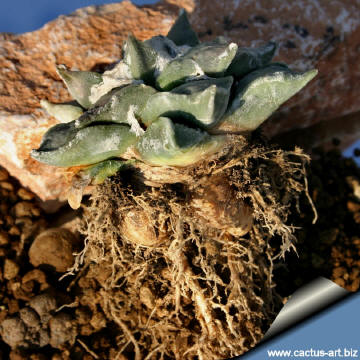 |
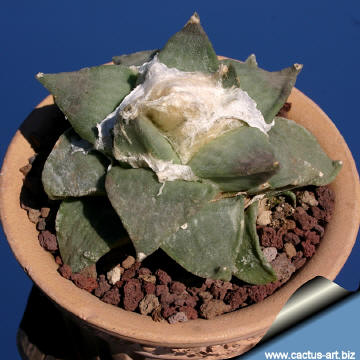 |
|
The tubercles of "furfuraceus" are also usually more obese,
pointed and smooth, with areoles on the tip.
Photo of
conspecific taxa, varieties, forms and cultivars of Ariocarpus
retusus.
|
|
Advertising
|
|
|
|
|
Family:
Cactaceae (Cactus
Family)
Scientific name:
Ariocarpus furfuraceus (S. Watson) C. H. Thomps.
Place of publication: Rep. (Annual) Missouri Bot. Gard.
9:130. 1898
Conservation status: Listed in
CITES Appendix I
Synonyms:
- Ariocarpus retusus
Scheidweiler, (1838)
Pubblished in: Bull. Acad. Sci. Brux. 5: 492
- Ariocarpus retusus var. furfuraceus (Watson) Frank,
1975
- Ariocarpus retusus f. furfuraceus
- Ariocarpus retusus subsp. furfuraceus
- Anhalonium furfuraceum (Watson) Coulter, 1894
- Ariocarpus furfuraceus var. rostratus Berger, 1925
- Mammillaria furfuraca Watson, 1890
Common name: Living Rock, Seven Stars
Origin: Widely distributed in Coahuila, San Luis Potosi,
Tamaulipas , Zacatecas and Nuevo Leon.
|
|
|
|
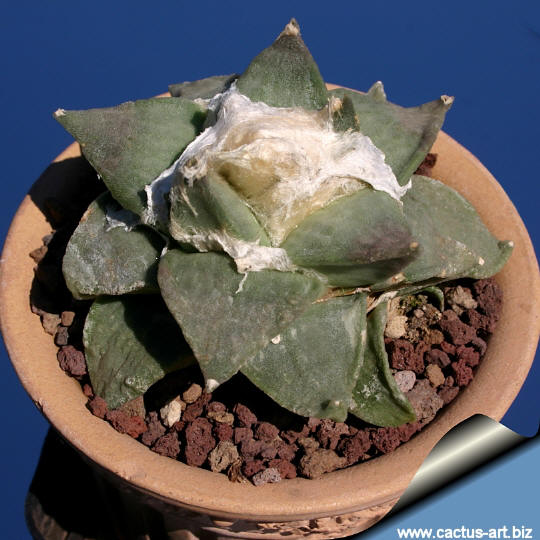
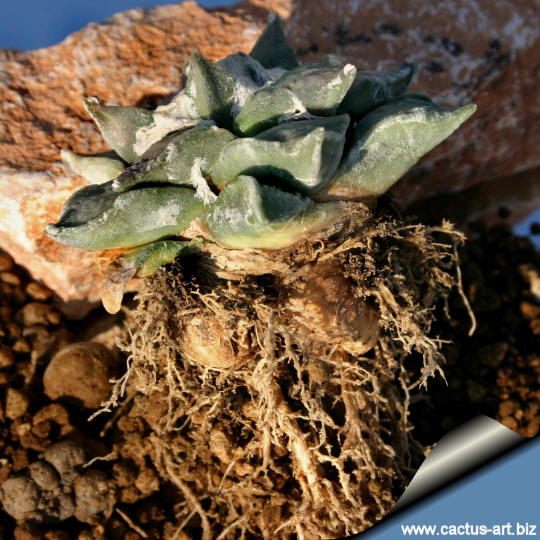
|
|
Cultivation: This species
is slow-growing, but certainly not as slow as some other types of cacti.
It is of easy cultivation in a well-drained, non-organic, free-draining
soil compost, with ample water during the growing season. Use of a weak
low-nitrogen fertilizer during the growing season can encourage growth.
The main threat to their development is root rot. Ariocarpus should be
kept dry whenever there is a threat of cold. The appearance of
Ariocarpus can benefit greatly by watering the plants from the bottom.
This practice will help to keep the “wool” on the top of the plant from
becoming matted or discoloured. It needs light shade to full sun.
Frost Tolerance: Hardy to -10° C
Propagation: It is probably the easiest species of the genus to
raise from seed, but will generally take about 6-10 years to reach
flowering size, occasionally grafted.

 |
|